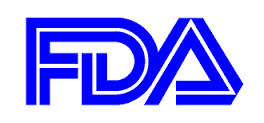 With the list of generic drugmakers in the FDA's bad books growing longer by the week, how to improve evaluation of its drugs was a top priority when the agency recently compiled its regulatory science goals. The outcome is a roadmap that will be funded from a pot of up to $50 million, and it reveals some of the difficulties facing the FDA as it works to get a handle on an industry riddled with unanswered questions as companies start to produce more-and-more complex products.
With the list of generic drugmakers in the FDA's bad books growing longer by the week, how to improve evaluation of its drugs was a top priority when the agency recently compiled its regulatory science goals. The outcome is a roadmap that will be funded from a pot of up to $50 million, and it reveals some of the difficulties facing the FDA as it works to get a handle on an industry riddled with unanswered questions as companies start to produce more-and-more complex products.
In the document, the FDA lays out five broad areas in which it wants to improve its generic evaluation capabilities and invites organizations to submit proposals detailing how they can help, Regulatory Focus reports. Many of the specific goals focus on the equivalence between generics and the innovator drugs they mimic, with the FDA particularly interested in methods to compare the bioavailability of complex and locally-acting products. Questions about the bioavailability of generic drugs and its impact on therapeutic effects are as old as the industry itself, but the industry's expansion into new dosage forms--such as sustained release injections and inhaled products--throws up fresh concerns.
The FDA is also looking at more human aspects of switching from innovative to generic drugs, with the agency keen to know what patients think about the quality and effectiveness of copycats and how tablet size affects substitution. High-profile quality failings at Ranbaxy, Sun Pharma and Wockhardt could have tainted the public's perception of generics, a possibility the FDA wants to understand while also working to get better at spotting problems early.
Other, less generic-focused aspects of the roadmap also deal with this goal. The FDA wants to develop sensitive, rapid, high-throughput methods to spot microbes, and assess ways other than sterilization to remove such contaminants. The technology is one of several ways the FDA wants to retool its capabilities and those of the industry, with the document also calling for investigations into continuous manufacturing, process analytical technologies and Quality-by-Design.
- read Regulatory Focus' article
- here's the FDA filing